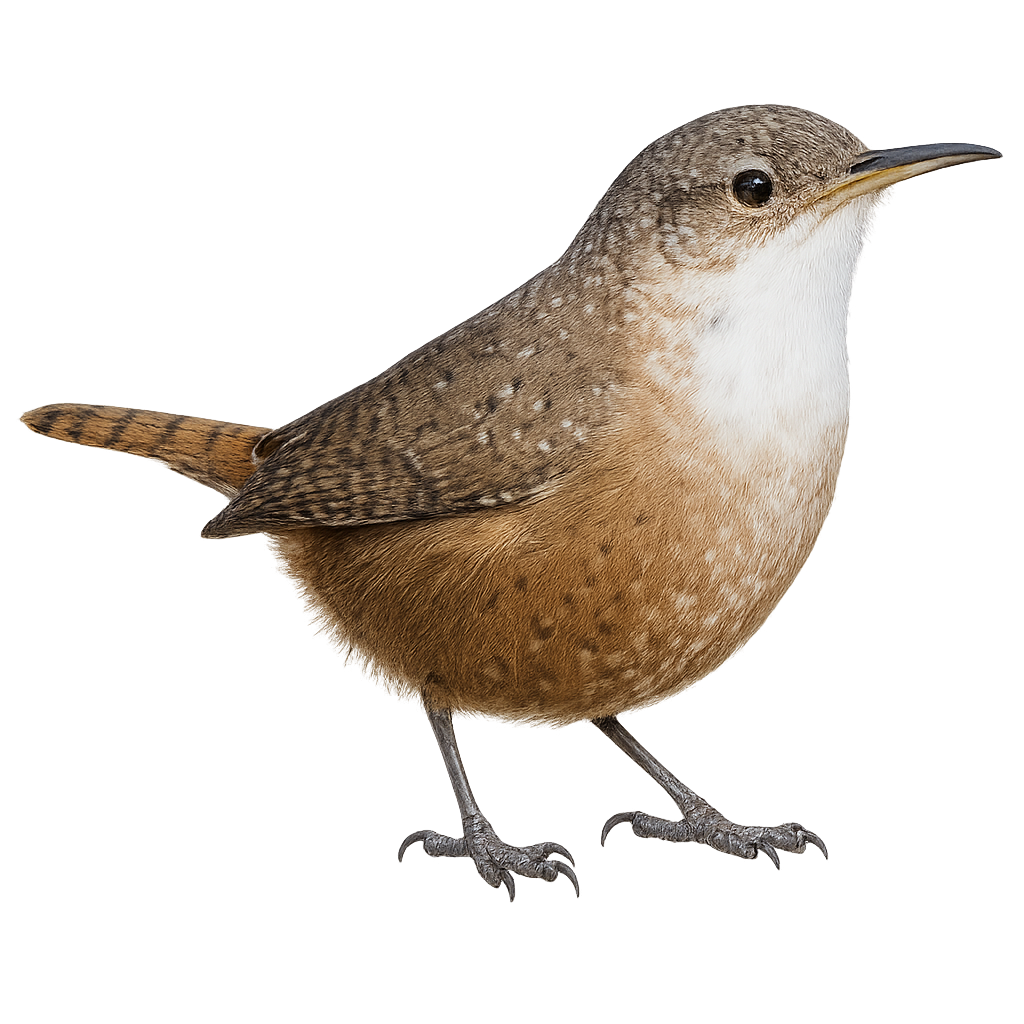Your wildlife photography guide.
Explore the canyon wren in detail, study its behavior, prepare your shots.
Where to observe and photograph the canyon wren in the wild
Learn where and when to spot the canyon wren in the wild, how to identify the species based on distinctive features, and what natural environments it inhabits. The WildlifePhotographer app offers tailored photography tips that reflect the canyon wren’s behavior, helping you capture better wildlife images. Explore the full species profile for key information including description, habitat, active periods, and approach techniques.
Canyon Wren
Scientific name: Catherpes mexicanus

IUCN Status: Least Concern
Family: TROGLODYTIDAE
Group: Birds
Sensitivity to human approach: Suspicious
Minimum approach distance: 10 m
Courtship display: March to May
Incubation: 14-16 jours
Hatchings: March to June
Habitat:
rocky canyons, cliffs, arid areas
Activity period :
Primarily active during the day, with peak activity in the morning and late afternoon.
Identification and description:
The Canyon Wren, or Catherpes mexicanus, is a small bird with a reddish-brown plumage, distinguished by its long slender bill and short tail. It is primarily found in the arid and rocky regions of North America, especially in canyons and cliffs. Its melodious and powerful song often echoes in these rugged environments. This wren feeds mainly on insects and spiders, which it finds in rock crevices. Though discreet, it can sometimes be seen moving nimbly along rocky walls. Its ability to adapt to challenging habitats makes it a fascinating bird for ornithologists and nature enthusiasts.
Recommended lens:
400mm – adjust based on distance, desired framing (portrait or habitat), and approach conditions.
Photography tips:
To photograph the Canyon Wren, choose early morning hours when the light is soft and the bird's activity is at its peak. Use a 400mm lens or longer to capture precise details without disturbing the bird. Look for locations where the wren is likely to feed, such as rocky crevices. Be patient and discreet, as this bird is suspicious. A tripod can be helpful to stabilize your camera, especially in low-light conditions.
The WildlifePhotographer App is coming soon!
Be the first to explore the best nature spots, track rutting seasons, log your observations, and observe more wildlife.
Already 1 431 wildlife lovers subscribed worldwide

